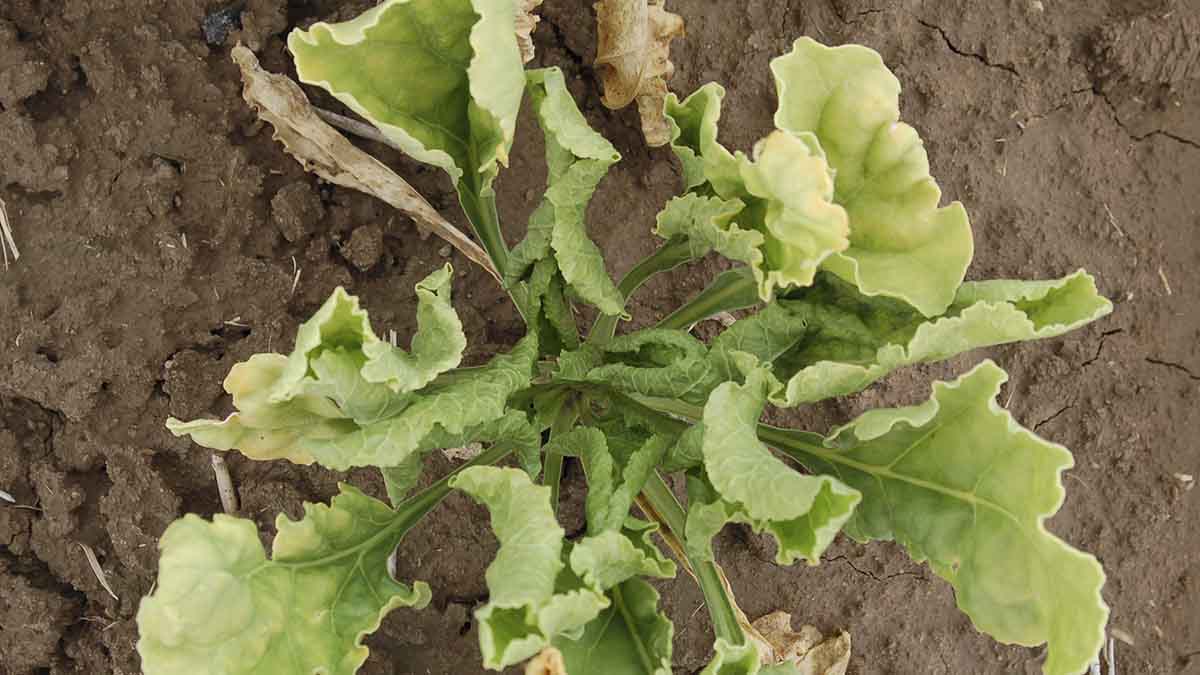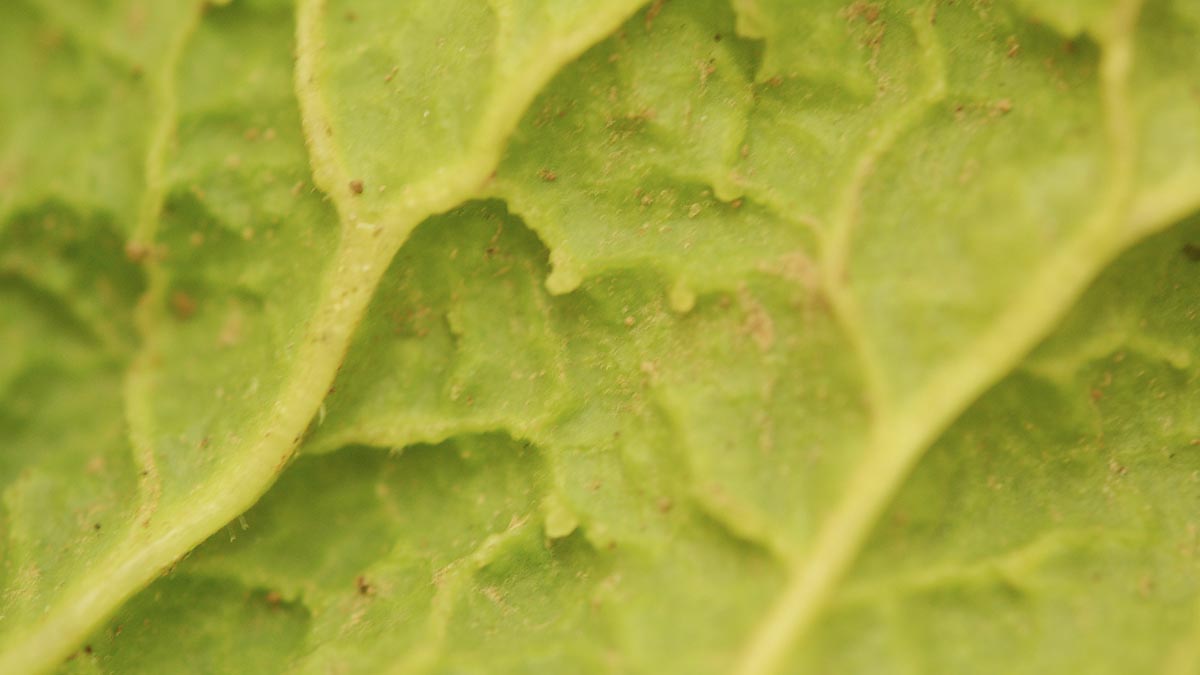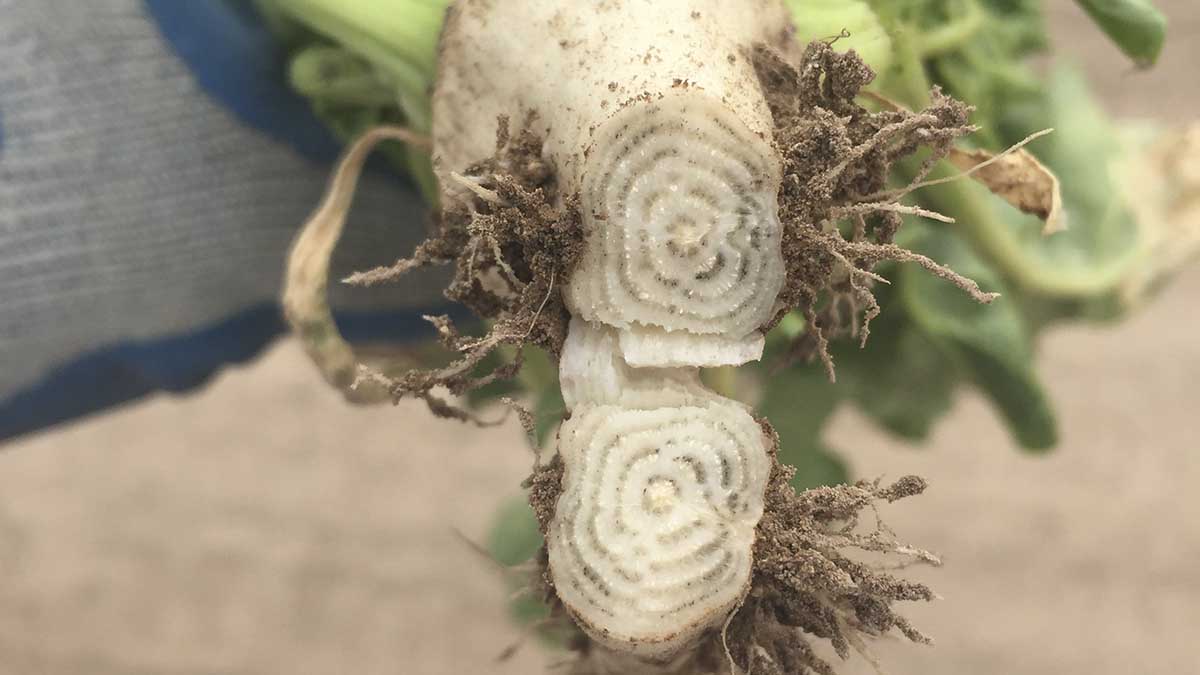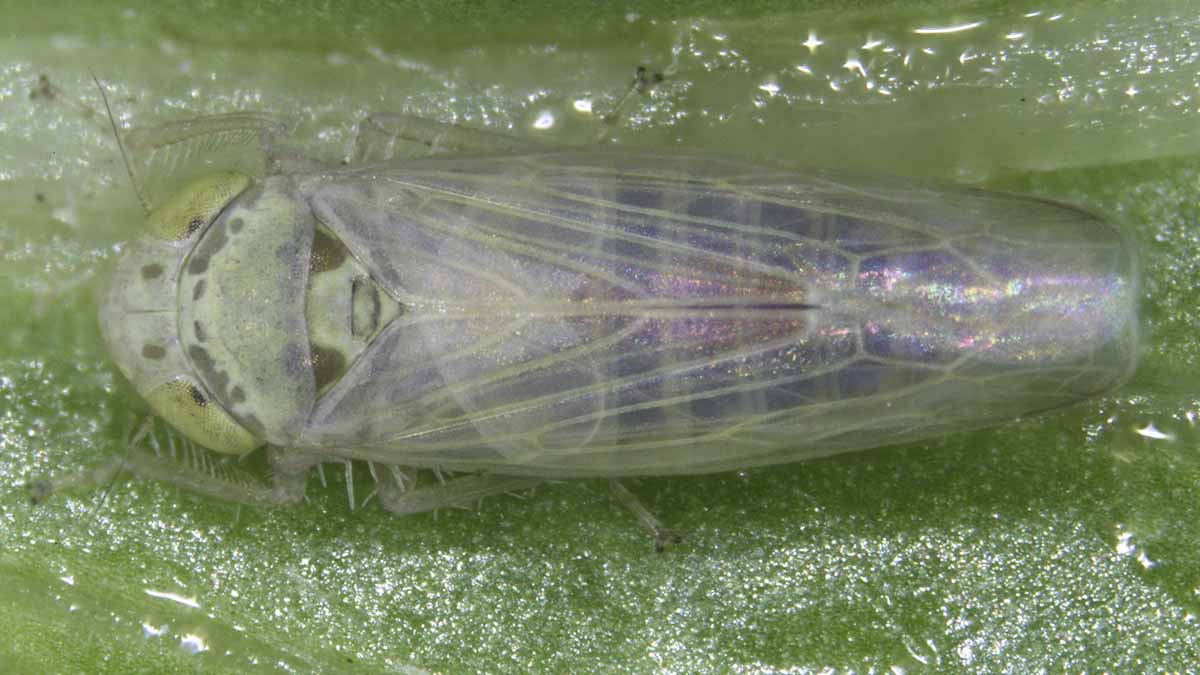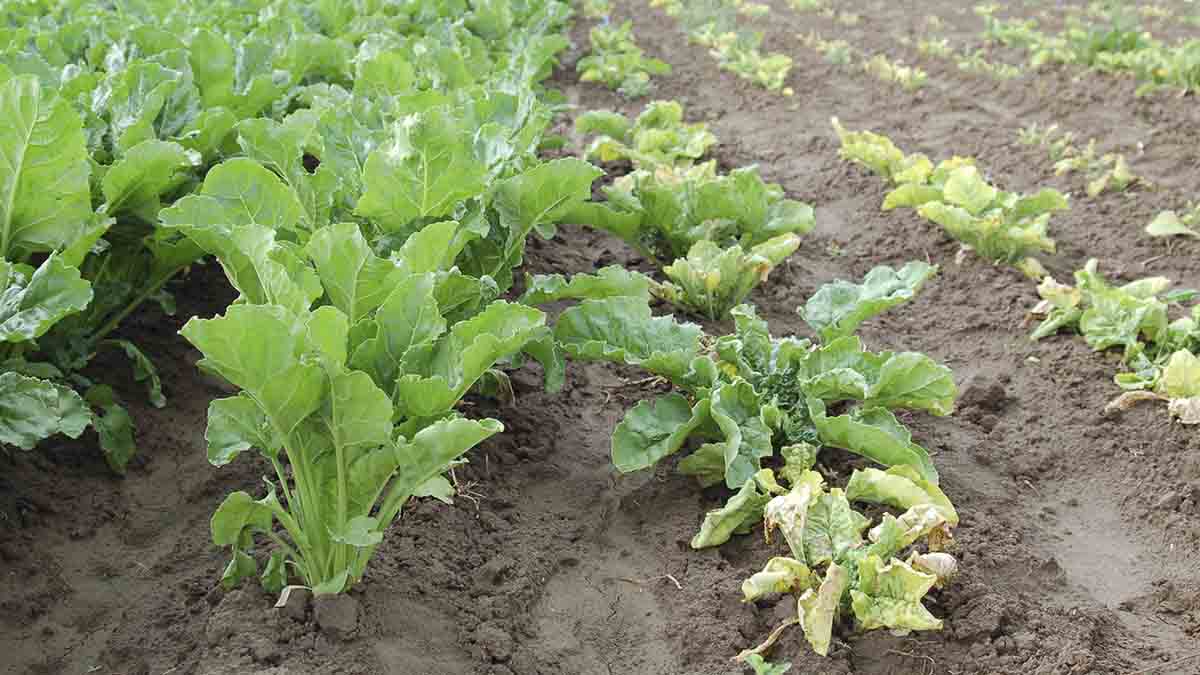Beet Curly Top Virus
Pest Common Name
- Disease name — Beet curly top virus (BCTV)
- Disease organism — Curtovirus spp.
- Sugar beet
- Crops: flax, table beet, tomatoes, peppers, beans, squash, Swiss chard, melon, cucumber and many others
- Weedy: mustards, Russian thistle, filaree, kochia and many others
Beet curly top virus (BCTV) is a highly destructive disease of sugar beets grown in Idaho. Symptoms of BCTV manifest on both sugar beet leaves and roots. Initially, the youngest leaves of the center whorl will show inward rolling of the leaf margins (Figure 1), with wart- or spine-like outgrowths forming on the underside of leaf veins shortly thereafter (Figure 2). Leaf symptoms also include thickening and increased brittleness of affected leaf tissue, and shifting discoloration from a dark, dull green to yellow before eventual death of the entire leaf. Sticky droplets may form on the petioles and veins of leaves, starting out clear and progressively blackening in color. Root symptoms include proliferation of secondary rootlets and formation of dark concentric rings or streaks of necrotic tissue within the taproot (Figure 3).



Initial leaf symptoms can sometimes be mistaken for unique variety traits (e.g., early curling of leaves) and root symptoms are sometimes mistaken for Rhizomania (e.g., proliferation of secondary roots and discoloration within root tissue). The presence of most or all of the above symptoms can allow for correct identification, and various lab tests are also available to confirm suspected BCTV infection.
Biology
BCTV generally refers to multiple closely related viruses in the genus Curtovirus (family Geminiviridae): beet severe curly top virus; beet mild curly top virus; beet curly top virus. A wide host range has been documented for BCTV, covering over 300 plant species from at least 44 different families.
The only vector of BCTV is the beet leafhopper (Circulifer tenellus) (Figure 4). The beet leafhopper is an efficient vector of BCTV, transmitting the virus in a persistent manner. Though four hours must pass after the leafhopper has acquired the virus before it can then transmit it, after this period the leafhopper can remain viruliferous for long periods of time (more than three months) and transmit the virus rapidly (in just a few minutes of feeding). Furthermore, beet leafhoppers have a wide host range, can reproduce multiple times per season and can move long distances with the assistance of wind currents. This wind-assisted movement is particularly important as beet leafhoppers move from their overwintering and breeding grounds (often rangeland or weedy areas) to cultivated fields in May or June. For more information on beet leafhoppers.

Damage
Though BCTV is largely managed through the use of tolerant varieties and the use of neonicotinoid seed treatments, severe outbreaks can cause yield losses of 30% or more. Leaf symptoms include stunting, rolling and eventual death (Figure 5). Damage arises from disruption of the vascular system. In plants infected with BCTV the taproot is dwarfed, and phloem tissue necrosis causes the development of dark concentric rings, while secondary roots proliferate. Symptoms of BCTV may escalate quickly and plants may die rapidly when large numbers of viruliferous beet leafhoppers are present, or plants are highly susceptible. Young plants, cultivars with little or no genetic resistance, and plants already suffering from other stresses such as drought are the most susceptible to severe damage.

Monitoring
In southern Idaho, beet leafhoppers may migrate from overwintering and breeding sites to cultivated crops any time between early May and the end of August. The timing of leafhopper movement is largely dependent on the annual senescence of their weedy winter hosts but remains difficult to predict.
Management
Primary Management Tactics
Planting tolerant varieties and seed treatment insecticides are common and effective means of managing BCTV. Resistant varieties need to “grow” into resistance, so early planting and establishment can facilitate development of greater tolerance by the time of vector migration into sugar beet fields.
Cultural
- Plant tolerant varieties that are also adapted to local conditions
- Early planting may help plants mature past the most vulnerable stages before the arrival of the beet leafhopper
- Manage weeds to reduce reservoirs of virus and vector populations
- Optimized irrigation and fertilization may minimize yield losses if plants become infected with BCTV
Chemical
- Insecticidal seed treatments can provide protection against the insect vector of BCTV until tolerance builds in growing sugar beets
- Recommendations for pesticides to use in the management of beet curly top virus can be found on the PNW Pest Management Handbooks webpage on beet curly top and beet leafhopper
Further reading
- Harveson, R.M., Hanson, L.E., Hein, G.L. 2009. Compendium of Beet Diseases and Insects. 2nd Edition. St. Paul, MN: APS Press, https://apsjournals.apsnet.org/doi/book/10.1094/9780890546598.
Pesticide Warning
Always read and follow the instructions printed on the pesticide label. The pesticide recommendations in this University of Idaho webpage do not substitute for instructions on the label. Pesticide laws and labels change frequently and may have changed since this publication was written. Some pesticides may have been withdrawn or had certain uses prohibited. Use pesticides with care. Do not use a pesticide unless the specific plant, animal or other application site is specifically listed on the label. Store pesticides in their original containers and keep them out of the reach of children, pets and livestock.
Trade Names — To simplify information, trade names have been used. No endorsement of named products is intended nor is criticism implied of similar products not mentioned.
Groundwater — To protect groundwater, when there is a choice of pesticides, the applicator should use the product least likely to leach.
- Figures 1-3, 5. Oliver T. Neher
- Figure 4. Erik J. Wenninger, University of Idaho
Desiree Wickwar, Entomologist, IPM Project Manager
Oliver T. Neher, Plant Pathologist, ASC
Erik J. Wenninger, Professor of Entomology, IPM Coordinator
2023







